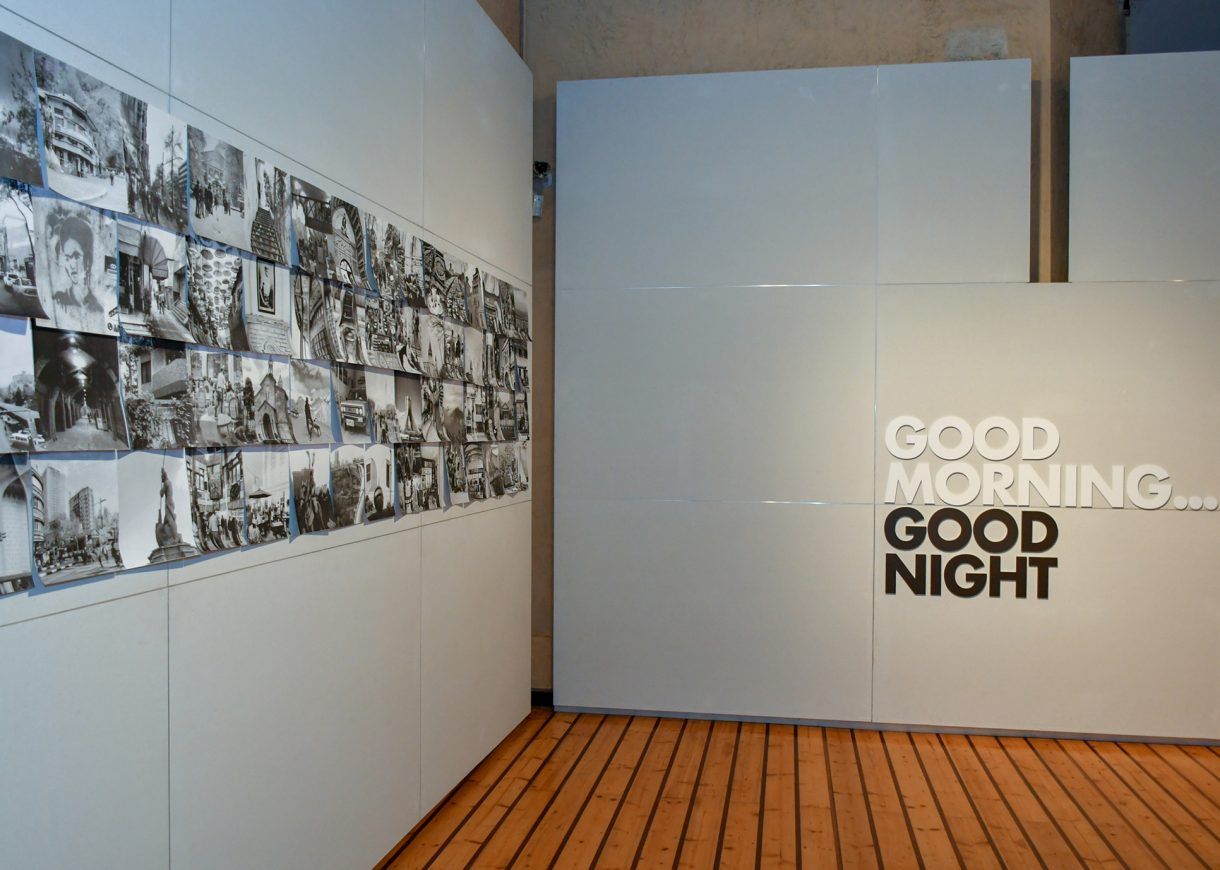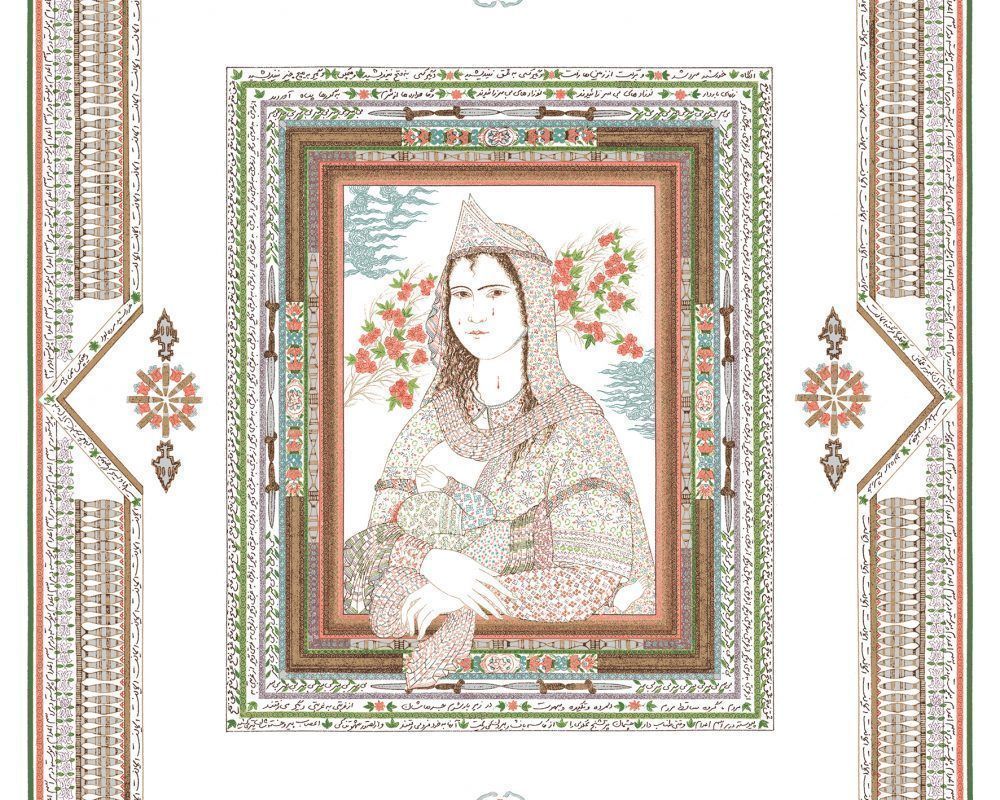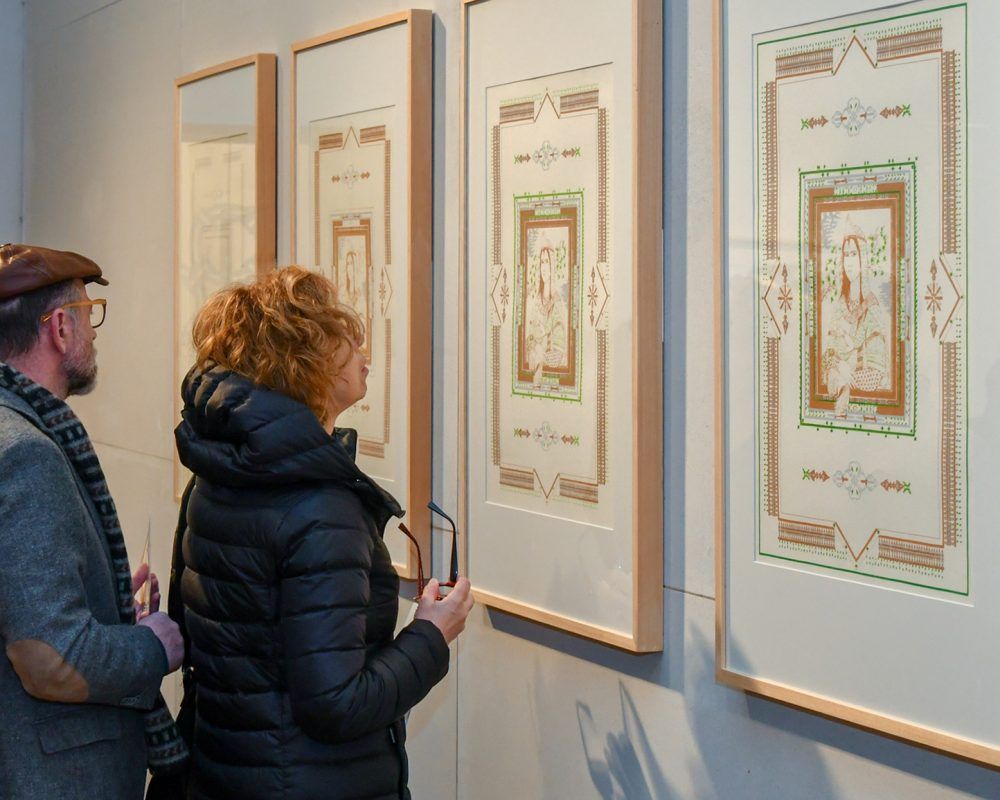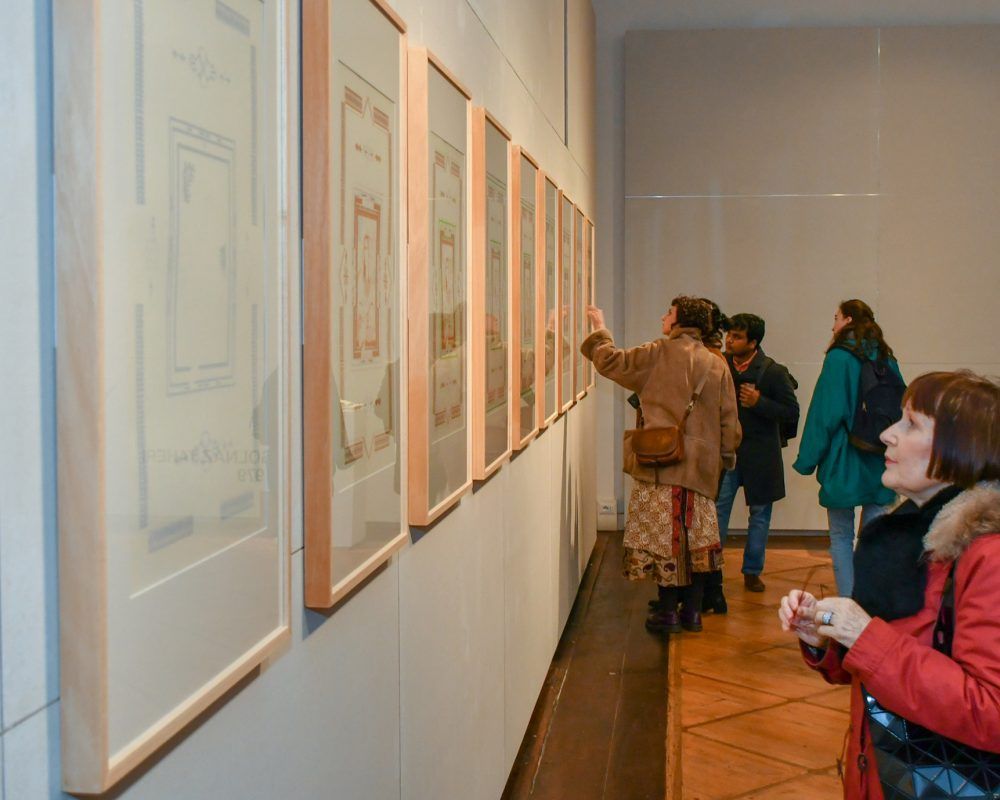By Tara Biglari
The Palazzo Ducale in Mantua, Italy – an extraordinary group of buildings dating from the 14th to the 17th centuries — recently hosted an exhibition by five female Iranian artists: Parvaneh Etemadi, Nargess Hashemi, Farah Ossouli, Rozita Sharafjahan and Golnaz Taheri.
The show (titled “Good Morning…Good Night!”) was organized by Iranian artist-curator Tarlan Rafiee and supported by her organization Bread & Salt – the name of which draws inspiration from the Iranian concept that sharing bread with guests forms a bond.
Tarlan has curated numerous exhibitions across Europe and the Middle East, and her own works are included in several private and public collections, including the British Museum. Her latest project is a way of exploring the narrative of women’s lives in Iran, and more broadly the Middle East.
Kayhan Life caught up with Tarlan to discuss her inspirations and motivations for putting on this exhibition.
Q: Can you tell us a little bit about the show?
Iranian society has experienced revolutions, coups d’états, strikes, sanctions, repressions, tyranny, and war. The situation has been particularly difficult for women, because they have had to define and establish their position as one half of a rapidly changing society, moving from tradition to modernity and back again.
“Good Morning… Good Night!” seeks to explore women, their situation and their position in Iranian society through the works of five intellectual female Iranian artists.
Q: How did you select the female artists?
As a curator, it is one of my jobs to follow artists, their works and their activities. For each project, I take a long time to think about which artists we are going to present and why. This is the hardest part of every exhibition.
In this case, I chose these five artists among the most renowned Iranian female artists from different generations and with different points of view. But all of them have one thing in common: they are all women to the extreme. They have each been influential in their own generation, affecting both men and women and leaving an impact on the art and society of Iran and the Middle East. They are independent artists.
Q: What impact do you hope to achieve with this exhibition?
I’m trying to start a conversation with non-Farsi speakers and non-Iranians. I believe we all have this duty to represent ourselves, especially when we don’t have a very nice representation in the mainstream. We should explain what the meaning of being Iranian is, our culture, our history and our heritage. This is at least what I am able to do with my very limited energy and resources.
Then, I’m trying to show the situation of us, women, in Iran and the region.
Q: Is the subject of women’s rights in Iran close to you personally?
I am a woman, and I am a woman in a traditional and patriarchal society. So yes, women’s rights in Iran and anywhere else is my concern and always one of my priorities.
Q: Can you tell us about your background, both as an Iranian and as an artist-curator?
A: I was born in Tehran, with some Azeri heritage (as seen by my name!) My parents always encouraged me to follow my dreams, and I’ve always had their support.
I studied design in university, but was an artist and used what I learned from university in my fine-art practice. As an artist, I had my first group show in 2001 and first solo show in 2006. Since then, I have participated in more than 40 national and international group shows and held 8 solo shows in Iran and abroad.
As a curator, I started Bread & Salt Projects with my partner and now husband Yashar Samimi Mofakham in 2008. Since then, as a freelance curator, as well as the director and curator of Bread & Salt, I have organized various exhibitions in Iran, the U.K., Austria, Armenia, and the United Arab Emirates, and have collaborated with various museums and galleries, including the Tehran Museum of Contemporary Art, the Isfahan Museum of Contemporary Art and the British Museum.
Q: How did this project come about and why Italy and the Palazzo Ducale?
A: This exhibition was commissioned by the Palazzo Ducale di Mantua. The director of the museum, Peter Assmann was part of the other project I co-curated between Iran and Austria, and Peter was part of the curatorial team. So we knew about each other and each other’s view on society, history, culture and art.
Essentially the museum asked for an exhibition focusing on women.
Q: Do you have any other upcoming exhibitions?
A: This exhibition will travel to other museums in other cities in Italy during 2018.
Besides that, we are planning projects in the U.K., Poland and France which are also commissioned from us and Bread & Salt. I am also working on some books, including a book on Parviz Tanavoli, which I am very excited about.
For more information, please visit the link.








